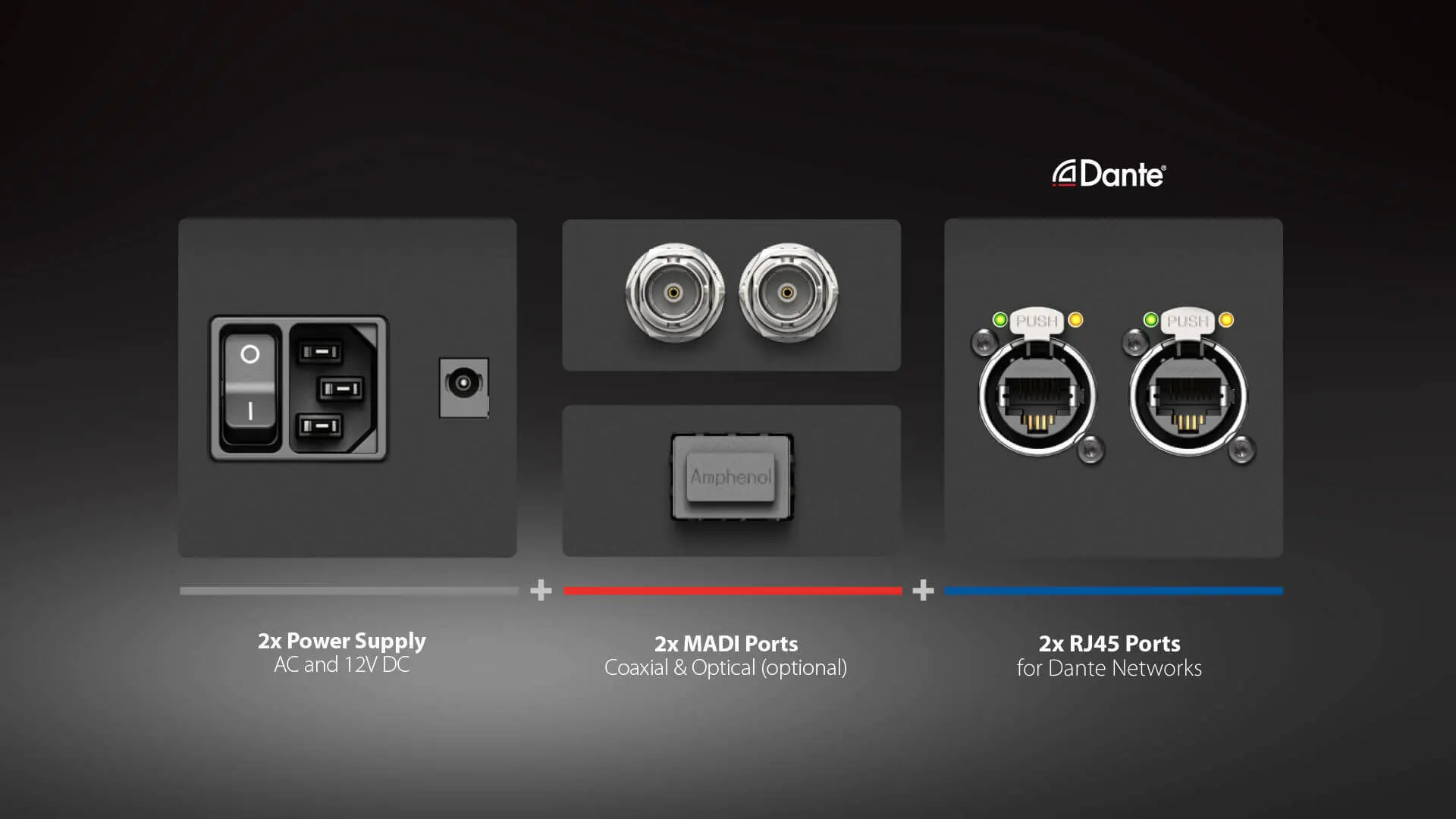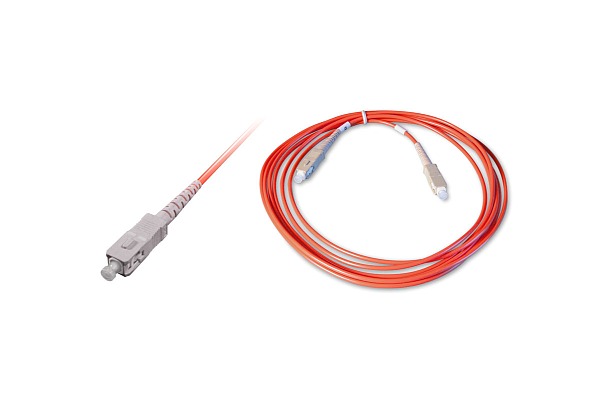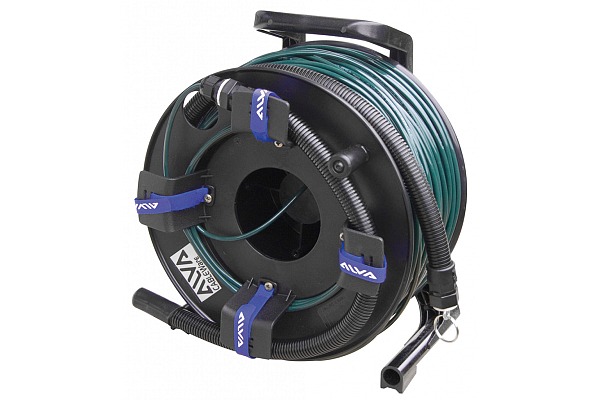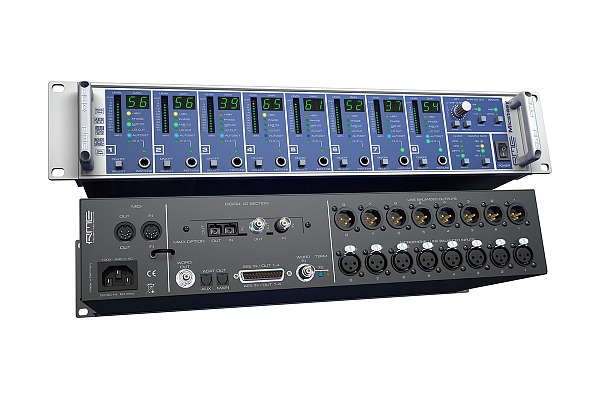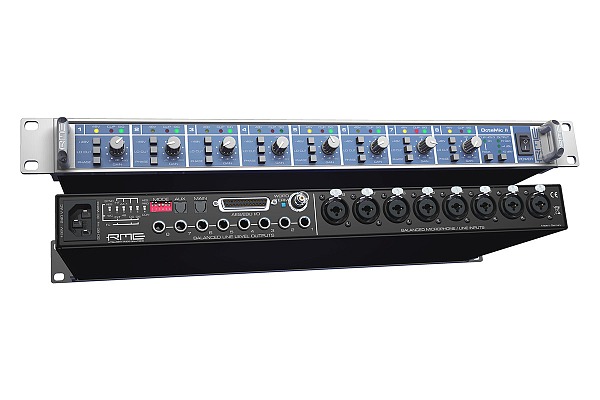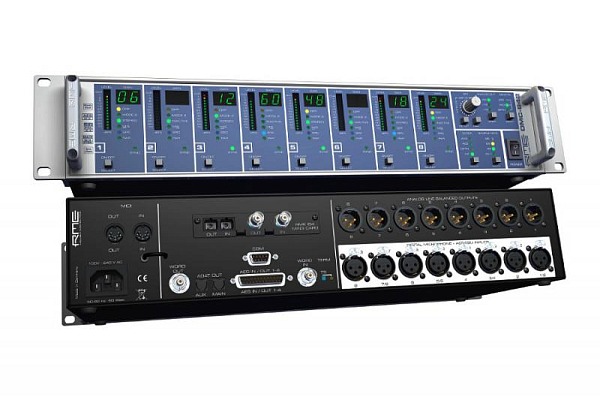RME 12 Mic-D
12-channel digitally controlled
microphone preamplifier with Dante, ADAT & MADI
Dante connectivity meets RME reliability
The RME 12Mic-D features twelve microphone and line-level inputs with digital, compromise studio-quality conversion, remotely controllable gains, integrated MADI and Dante connectivity, and a host of other features that make it the perfect companion for all professional applications.
Twelve transparent microphone preamps for outstanding conversion
The PAD-free microphone input stages have a gain range of 75 dB and accept signals of up to +18 dBu. On the transducer side, the 12Mic-D shines with an excellent signal-to-noise ratio on all channels. All twelve front-panel XLR connectors accept microphone and line-level signals, while the first four connectors also accept TRS plugs, with switchable high impedance (Hi-Z) for instruments.
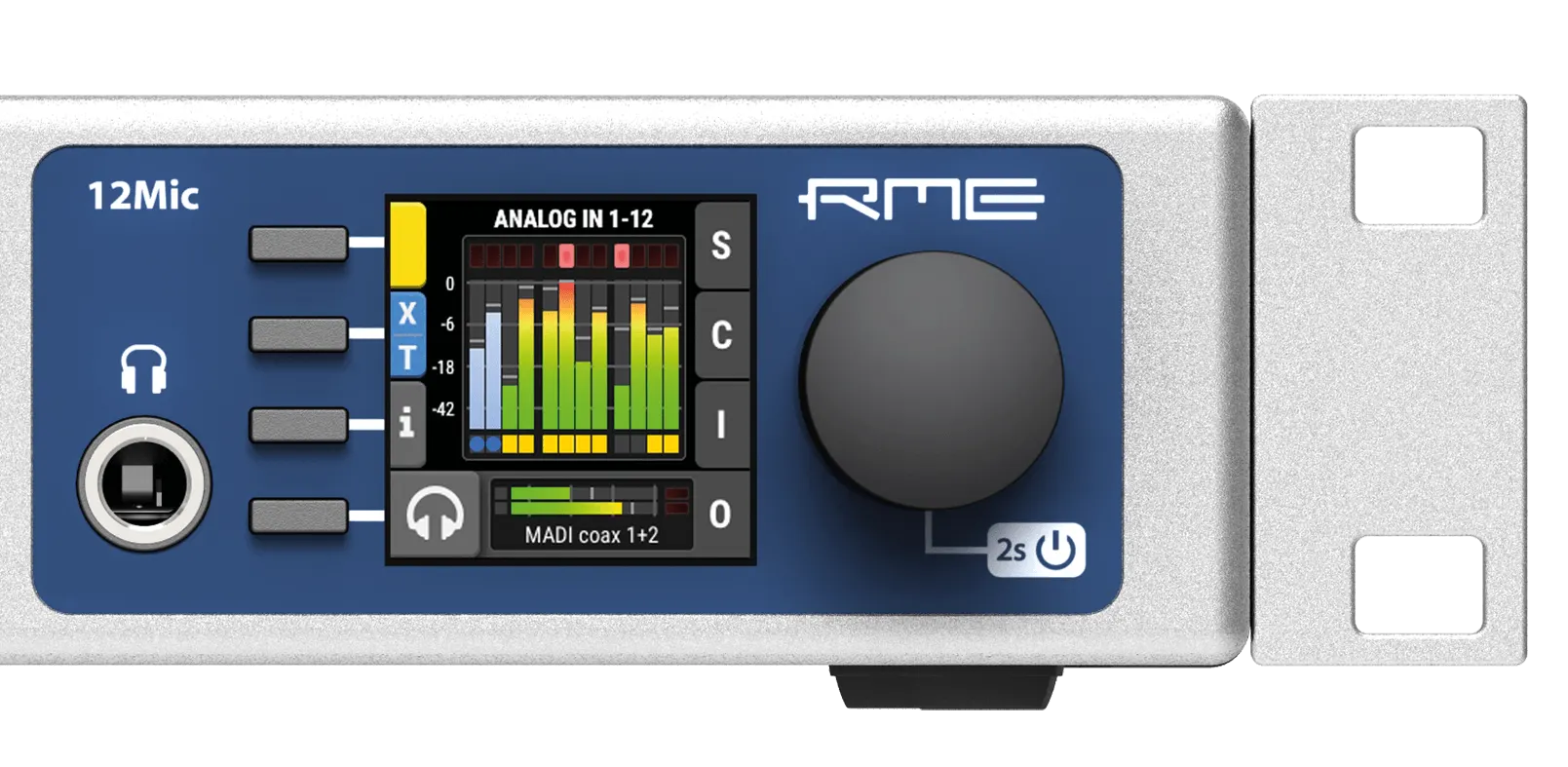
MADI & ADAT for maximum flexibility
Both coaxial and optical (via an SFP module) MADI inputs are available for independent or redundant operation and can be used for linking, merging and conversion of MADI signals with incredibly low latency.
Three ADAT optical outputs provide up to 24 audio channels at single speed (e.g. a combination of microphone inputs, MADI signals, and Dante signals) or 12 output channels at a sample rate of 96 kHz, ensuring compatibility with a variety of audio interfaces. In addition, the ADAT connectors can also be used to send monitor mixes from Dante or MADI inputs to existing DACs/ Headphone amps.
Dante Audio Network - 2 fully redundant network ports
Given the ever-changing environment of network audio solutions, the challenge for the RME development team was to design a high-performance device platform that would guarantee unparalleled flexibility and stability for years to come. To meet these exacting requirements, everything was designed from the ground up in accordance with RME's guiding principles. By integrating Audinate's Dante IP Core on a specially developed RME FPGA platform, RME not only delivers a highly flexible solution, but also comes one step closer to the goal of a truly universal audio network.
.



